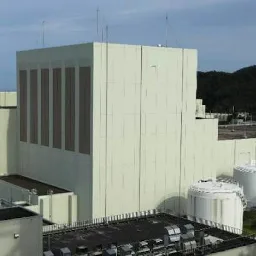Japan / Onagawa-2 Restart Brings Number Of Nuclear Reactors Online To 13
Japan / Onagawa-2 Restart Brings Number Of Nuclear Reactors Online To 13
Facility to north of Tokyo has been offline since Fukushima disaster in March 2011

Japan’s Tohoku Electric Power has restarted Unit 2 at its Onagawa nuclear station after additional safety construction work delayed the process.
The long-delayed restart of the 796-MW boiling water reactor unit, confirmed on Tuesday (29 October), takes the number of Japan’s operational reactors to 13, with a combined capacity of about 12,500 MW.
The station, in Miyagi Prefecture, northeastern Japan, is about 180 km north of the Fukushima-Daiichi nuclear power station. It was hit by the March 2011 earthquake and tsunami that resulted in meltdowns at Fukushima-Daiichi, but survived with its cooling system intact, saving its reactors from the threat of meltdowns. Onagawa has been offline since the Fukushima disaster.
Tohoku Electric received a de facto regulatory approval to restart Unit 2 in 2020, but has seen a delay in the completion of safety constructions that needed to be introduced under post-Fukushima rules.
One of the measures that needed to be implemented was the construction of a 29-metre-high, 800-metre-long seawall along the Pacific coast to guard against a tsunami as high as 23.1 metres.
For Tohoku Electric, the Onagawa restart follows a total investment of $3.7bn (€3.4bn) on safety measures to meet the tougher rules adopted after the Fukushima disaster.
There are three BWR units at the Onagawa site. Onagawa-1, the oldest of the three plants and a smaller unit at 498 MW, has been permanently shut down. The 796-MW Onagawa-3 is offline, but could be restarted.
The 13 nuclear plants that have now resumed operations after meeting post-Fukushima safety standards are: Sendai-1 and -2, Genkai-3 and -4, Ikata-3, Mihama-3, Ohi-3 and -4, Onagawa-2 and Takahama-1, -2, -3 and -4. Business Backs ‘Maximum Use Of Nuclear’
The Japan Business Federation, or Keidanren, recently called on the government to clearly spell out a policy to make the maximum use of nuclear power, which it said contributes to the country’s energy security and decarbonisation.
“Concerns over future power shortages cannot be wiped out and there will be no choice but to reduce domestic capital spending as a result if the government fails to clarify a path toward expanding the use of such energy sources,” Keidanren said.
Keidanren – considered to be the voice of big business in Japan – noted that Japan has been facing the toughest energy challenges since the oil crises in the 1970s and 1980s.
It said unstable international situations, decarbonisation and progress in digital industries will boost demand for electric power. Securing cheap and stable clean energy sources such as nuclear power is “essential”, it said.
Earlier this month Japan’s new economy minister said the country will need to maximise the use of existing nuclear power plants because AI and data centres are expected to boost electricity demand.
Yoji Muto said the new administration will plan restarting as many reactors as possible so long as they are safe.
Muto’s comments point to a continuation of former prime minister Fumio Kishida’s policy that moved Japan back towards nuclear energy as a major power source.
Newly appointed prime minister Shigeru Ishiba, who succeeded Kishida on 1 October following the Liberal Democratic Party presidential election, had said during his election campaign that Japan should reduce its dependence on nuclear energy, but later said that he would support the restart of existing plants.